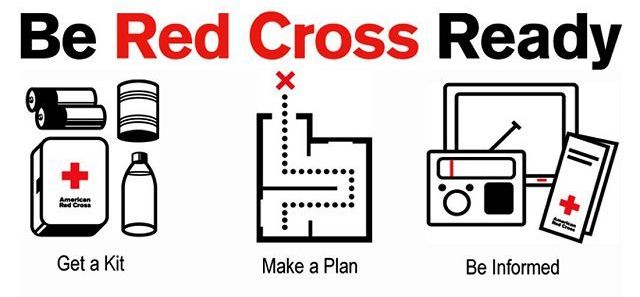Are you ready? September marks emergency preparedness month
Pat Lang, local American Red Cross representative, knows how important it is to be prepared for an unplanned event. Working with the Red Cross makes her extremely aware of the many disasters that can immobilize a family and community within a matter of minutes.
Although we have no control over weather, wind and other disastrous events, we do have control over our preparation for such events. This September officially marks the eighth annual National Preparedness Month, a time designated to educate and bring awareness to individuals so they might become more prepared for the unexpected.
Because we never know when or where a disaster will strike, every family needs to prepare in advance by gathering needed supplies and making a plan, Lang explained. When families are prepared and have a plan it is the best way to stay safe. It also eliminates confusion and helps people feel calm and confident during an emergency or disaster, which in turn can save lives.
The American Red Cross suggests every family make a plan by sitting down and discussing potential disasters and then establishing responsibilities for each family member during such an event.
We suggest establishing two places to meet after a disaster, Lang added. You need a place to meet right outside your home in case of a sudden emergency such as a fire, but you also need a place to meet outside of your neighborhood in case you cannot return to your home for some reason.
Every adult in the household should also know how to turn off utilities such as electricity, water and gas. Also, make sure your family knows how to use a fire extinguisher and store one properly in your home.
Every household should have an emergency kit that is checked every six months, allowing an opportunity to replace water, food and other perishable items within the kit.
Having an ample supply of clean water is a top priority in an emergency, Lang said. A normally active person needs to drink at least two quarts (a half gallon) of water each day. You will also need water for food preparation and hygiene. It is suggested to store at least an additional half-gallon per person, per day for this. Store at least a three-day supply and consider storing a two-week supply of water for each member of your family. If you are unable to store this much, store as much as you can. You can reduce the amount of water your body needs by reducing activity and staying cool. Also, dont forget to take your pets and service animals into account as well.
While water is a top priority other items recommended for a family emergency kit include: Food - nonperishable, easy to prepare items (three-day supply for evacuation, two-week supply for home), flashlight, battery powered radio (NOAA weather radio, if possible), extra batteries, first aid kit, medications (seven-day supply) and medical items, multi purpose tool, sanitation and personal hygiene items, copies of personal documents (medication list and pertinent medical information, proof of address, deed/lease to home, passports, birth certificates, insurance policies), family and emergency contact information, a little extra cash, emergency blanket and map(s) of the area. Families should also consider their own personal situations, such as an infant or an elderly individual living in their household, when making up an emergency kit.
Pack the items in easy-to-carry containers, label the containers clearly and store them where they would be easily accessible, Lang said. Duffle bags, backpacks, and covered trash receptacles are good ideas for containers. In a disaster situation, you may need access to your disaster supplies kit quickly - whether you are sheltering at home or evacuating. Following a disaster, having the right supplies can help your family be prepared for home confinement or evacuation.
The American Red Cross is always there after a disaster to lend aid and assistance. The Red Cross provides immediate relief such as emergency shelter, meals and first aid. The organization also provides help to pay for basic necessities so you can return to a more normal living situation as soon as possible. Referring families to the proper government agency after a disaster is another resource offered by the Red Cross.
The Red Cross works with you and your family as a team, Lang said. If you need help, go to the nearest Red Cross Service Center. If possible, bring identification that shows where you lived at the time of the disaster. This will help us to help you better.
The American Red Cross, the Centers for Disease Control and Prevention along with the Federal Emergency Management Agency and many other government agencies offer detailed information and recommendations to keep you prepared and safe during a disaster. If you would like more information about what you can do to prepare your family or your business for an emergency, you may contact any of the above agencies at the following websites: http://www.redcross.org, http://www.cdc.gov and http://www.fema.gov.
Remember, being prepared is the number one way to get your family through any crisis or disaster. If something unforeseen happens, having a plan is the best way to maneuver your life back to normal.

